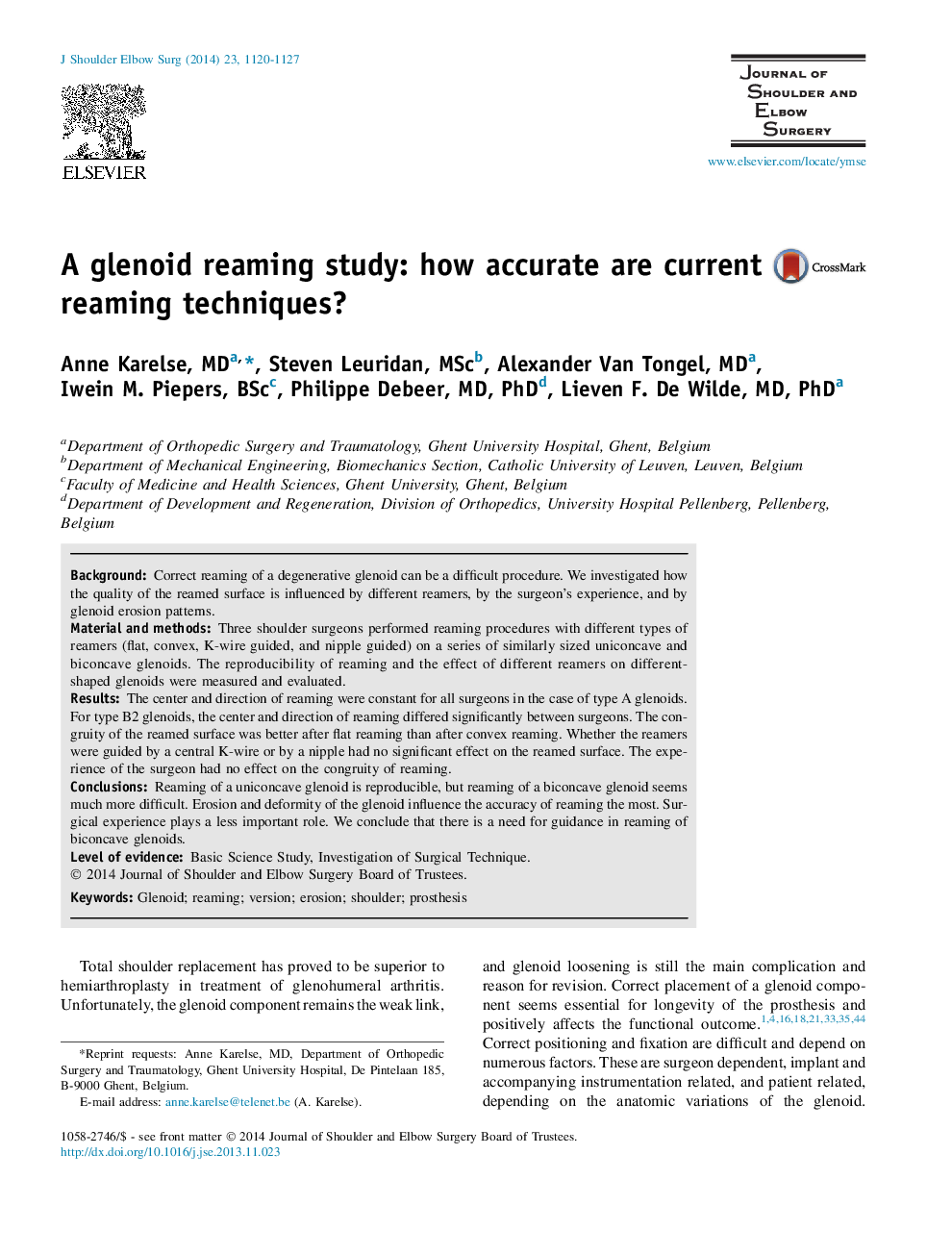| Article ID | Journal | Published Year | Pages | File Type |
|---|---|---|---|---|
| 4074110 | Journal of Shoulder and Elbow Surgery | 2014 | 8 Pages |
BackgroundCorrect reaming of a degenerative glenoid can be a difficult procedure. We investigated how the quality of the reamed surface is influenced by different reamers, by the surgeon's experience, and by glenoid erosion patterns.Material and methodsThree shoulder surgeons performed reaming procedures with different types of reamers (flat, convex, K-wire guided, and nipple guided) on a series of similarly sized uniconcave and biconcave glenoids. The reproducibility of reaming and the effect of different reamers on different-shaped glenoids were measured and evaluated.ResultsThe center and direction of reaming were constant for all surgeons in the case of type A glenoids. For type B2 glenoids, the center and direction of reaming differed significantly between surgeons. The congruity of the reamed surface was better after flat reaming than after convex reaming. Whether the reamers were guided by a central K-wire or by a nipple had no significant effect on the reamed surface. The experience of the surgeon had no effect on the congruity of reaming.ConclusionsReaming of a uniconcave glenoid is reproducible, but reaming of a biconcave glenoid seems much more difficult. Erosion and deformity of the glenoid influence the accuracy of reaming the most. Surgical experience plays a less important role. We conclude that there is a need for guidance in reaming of biconcave glenoids.
